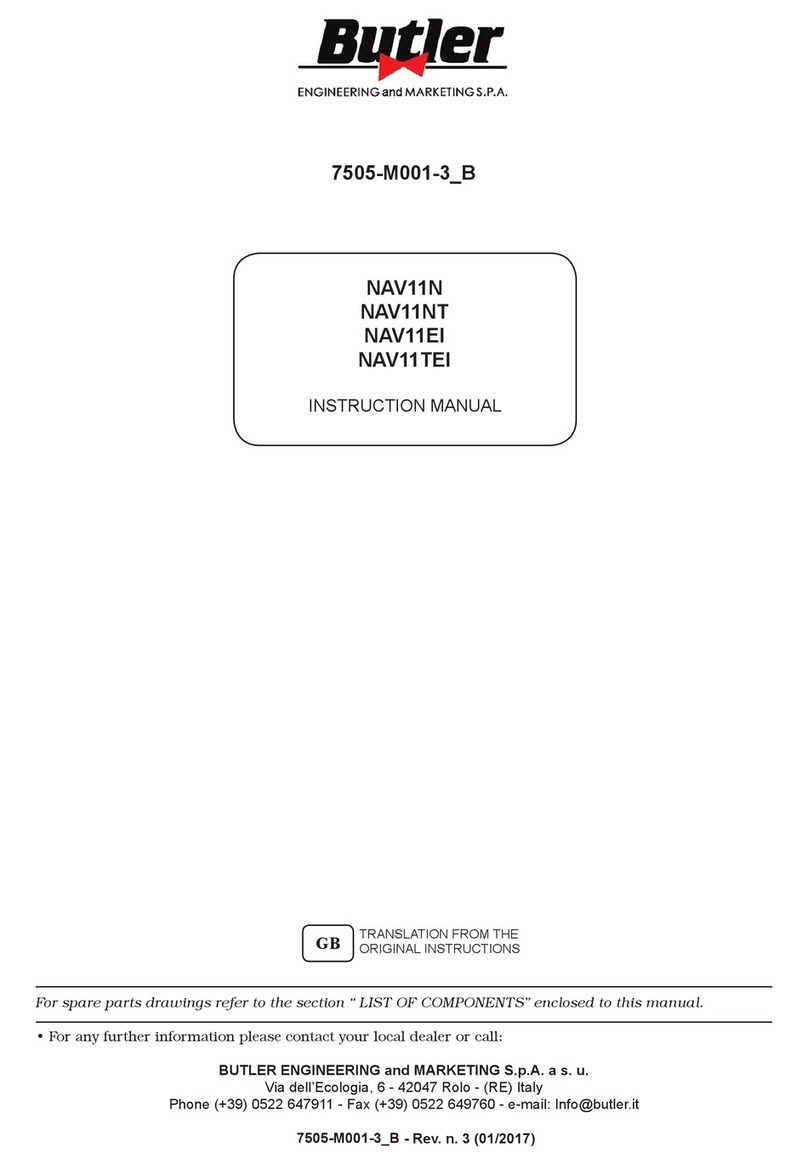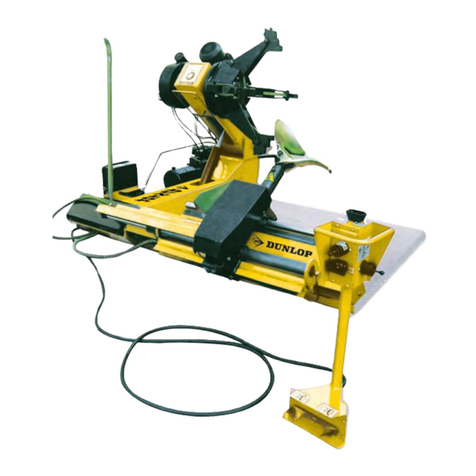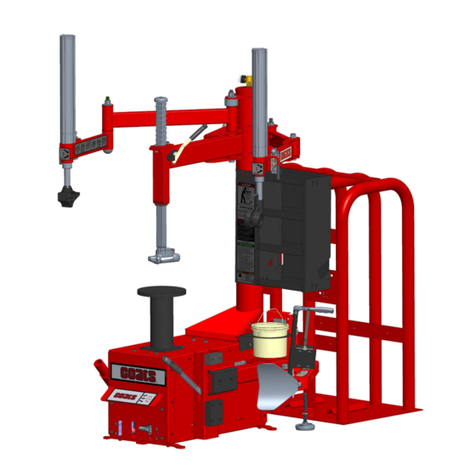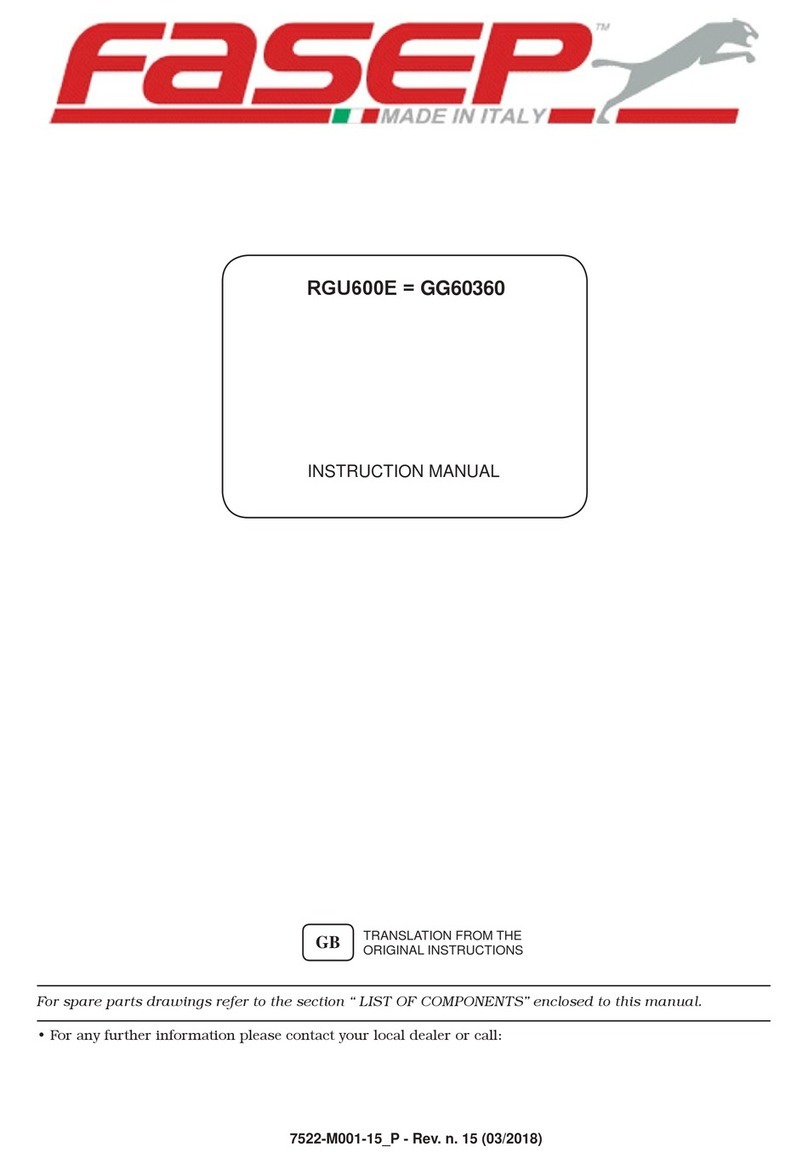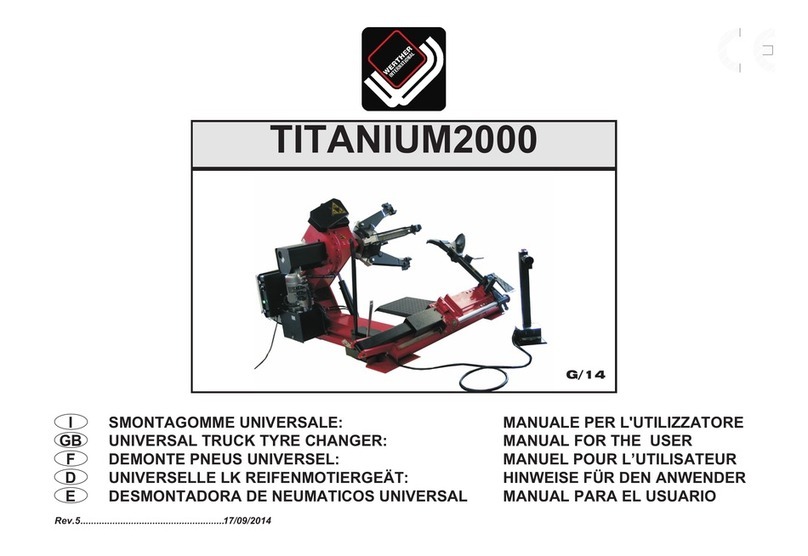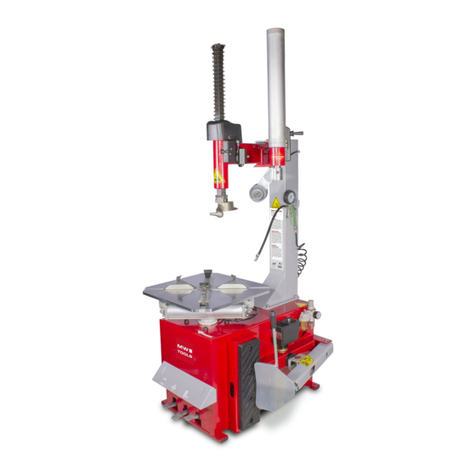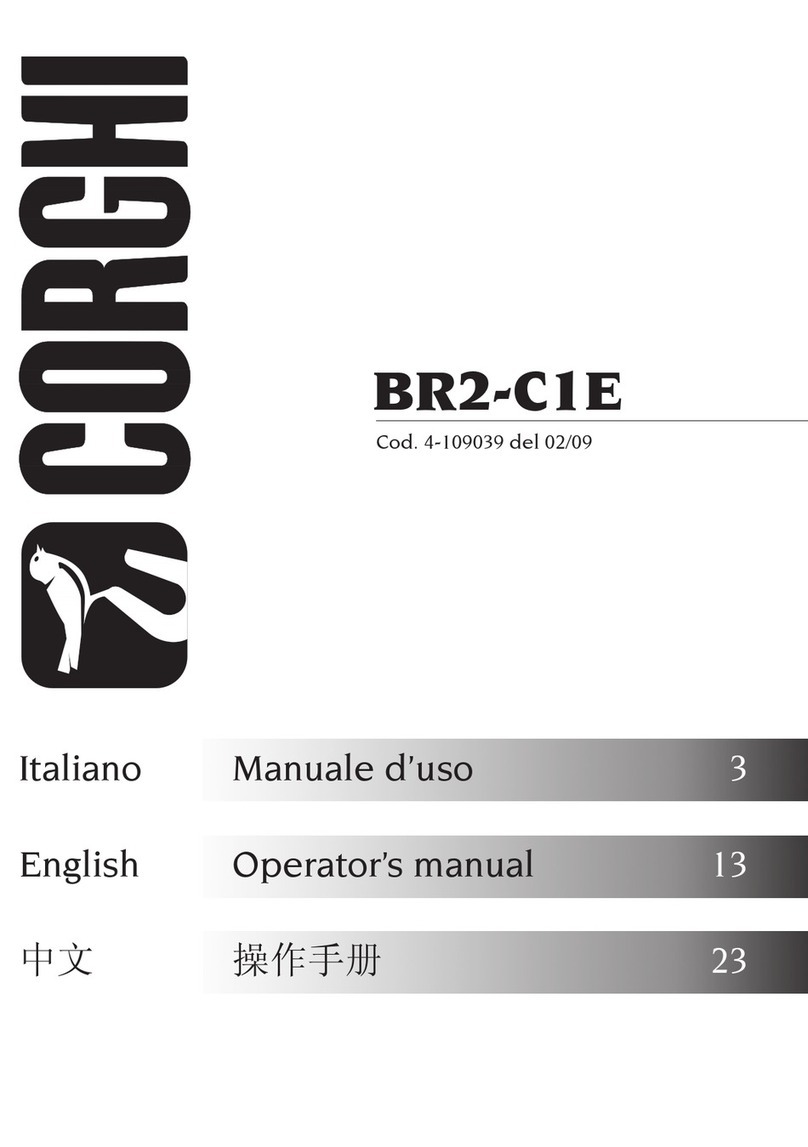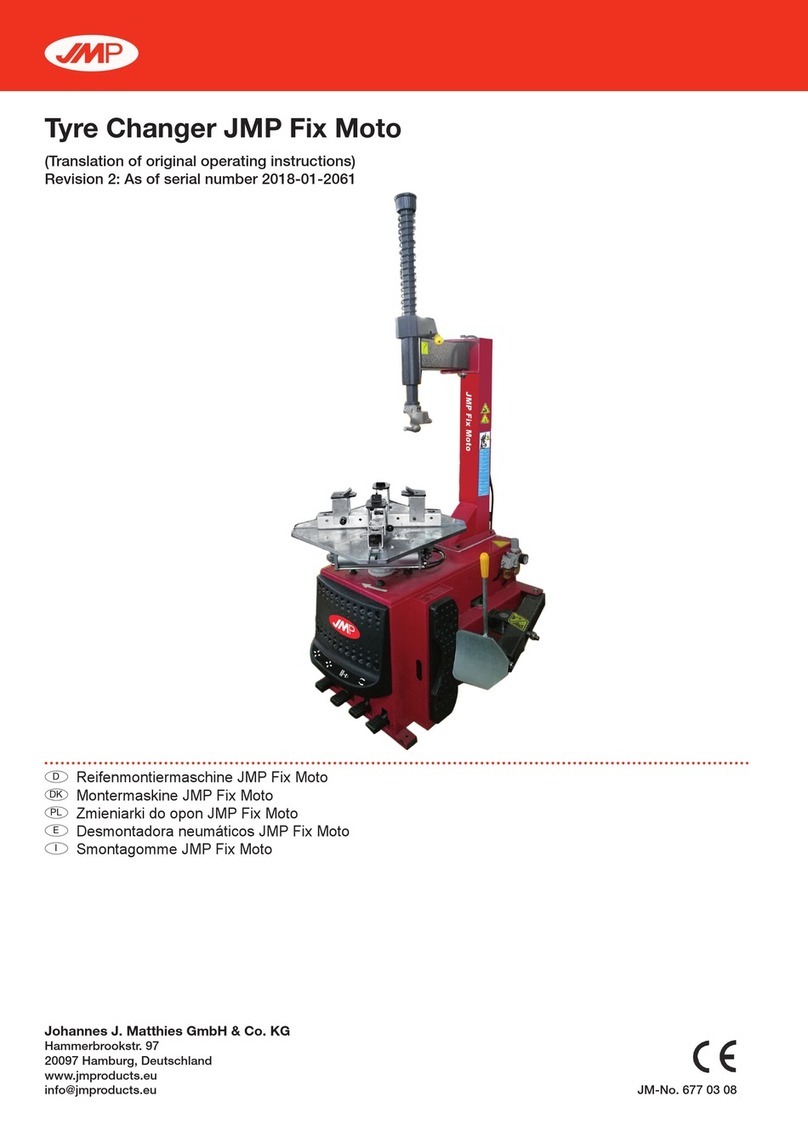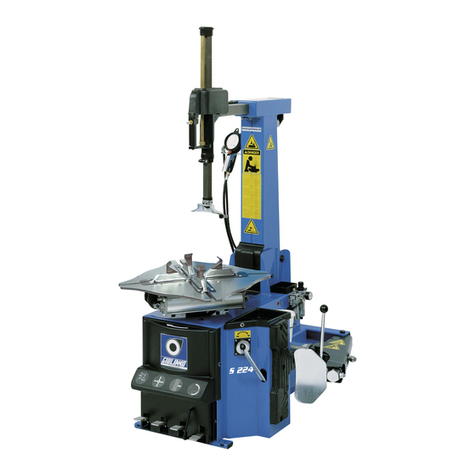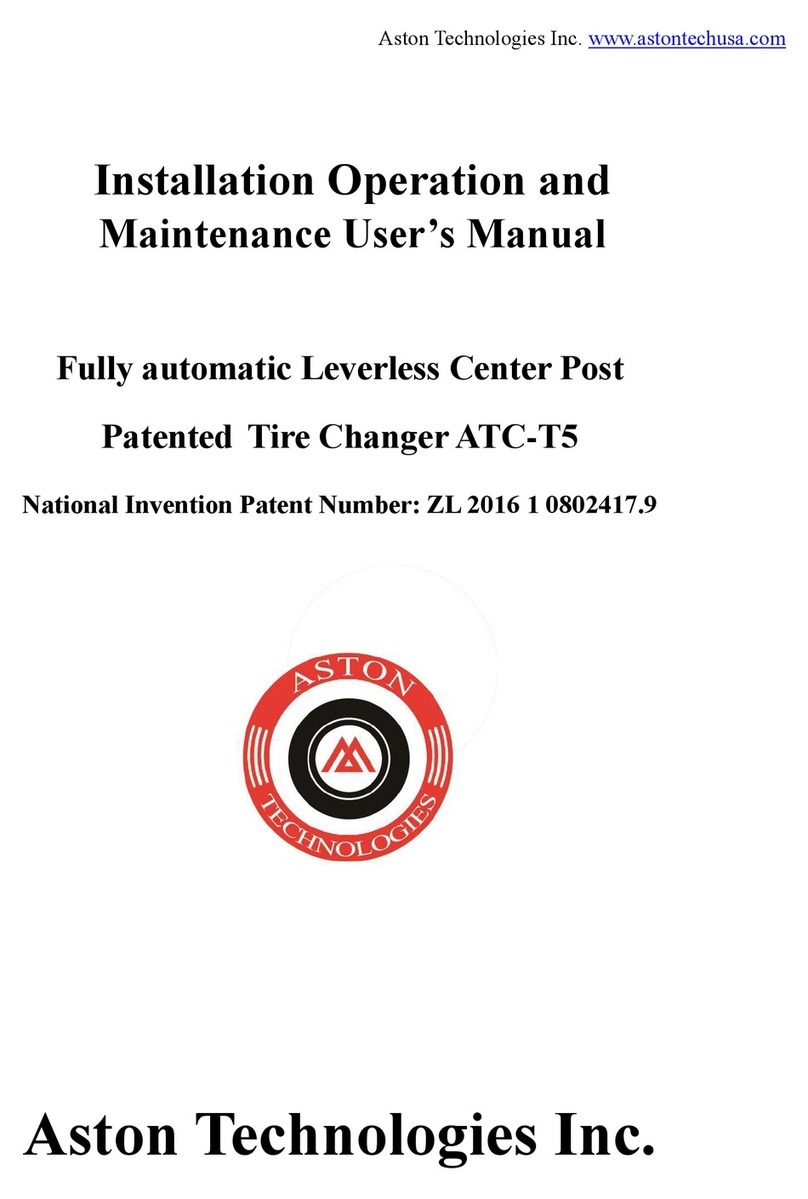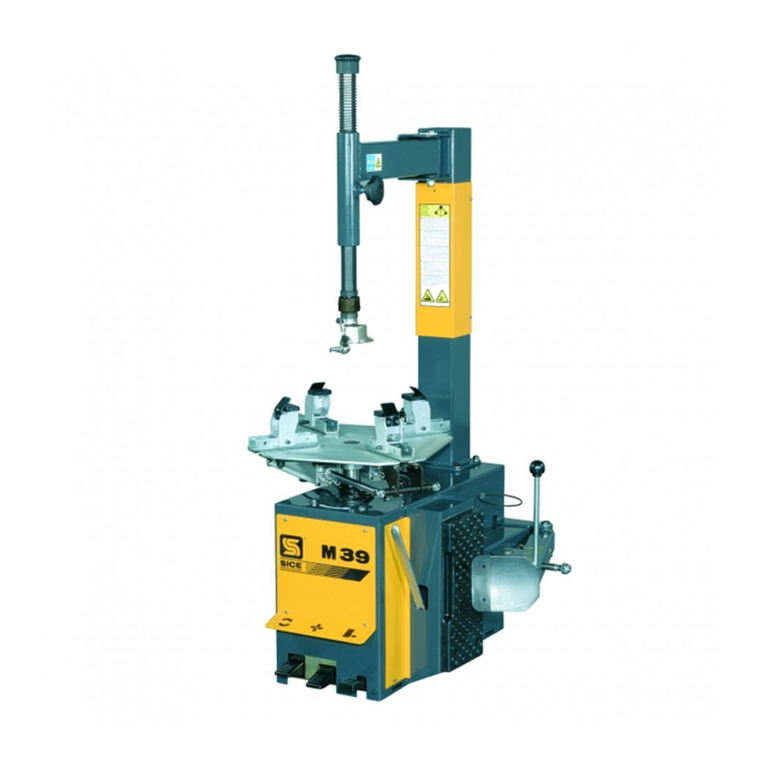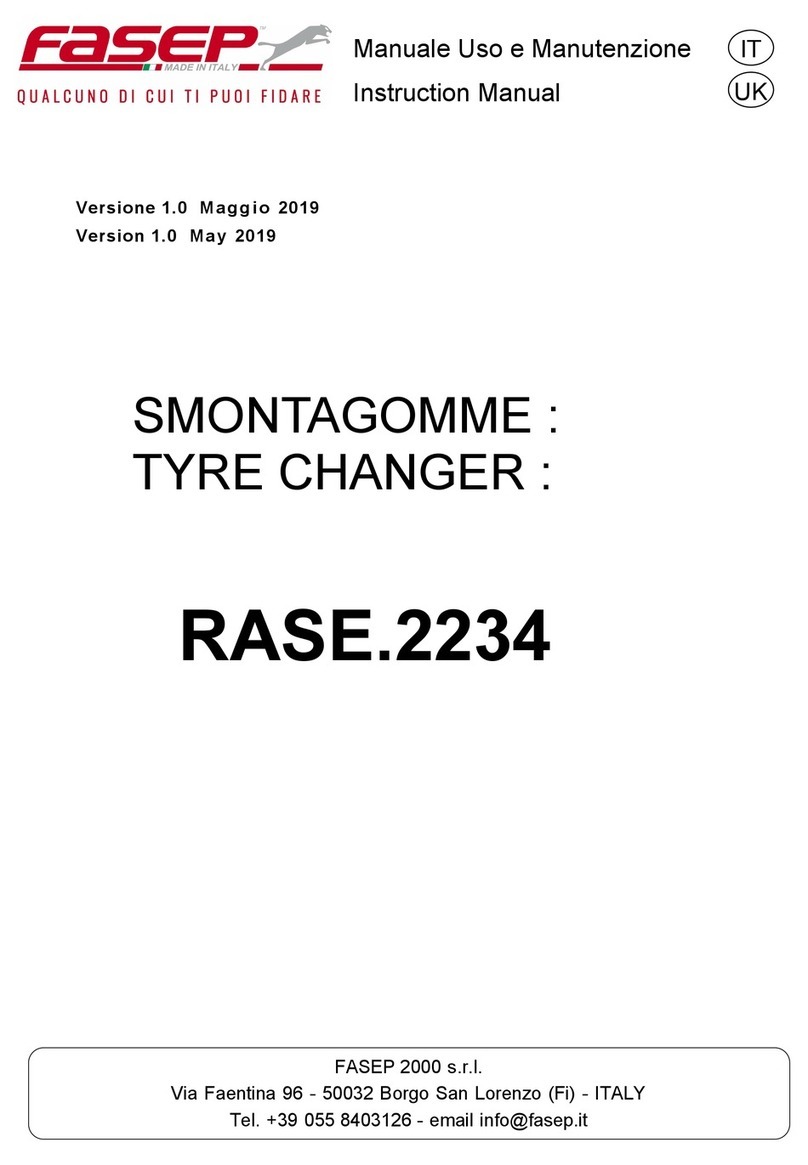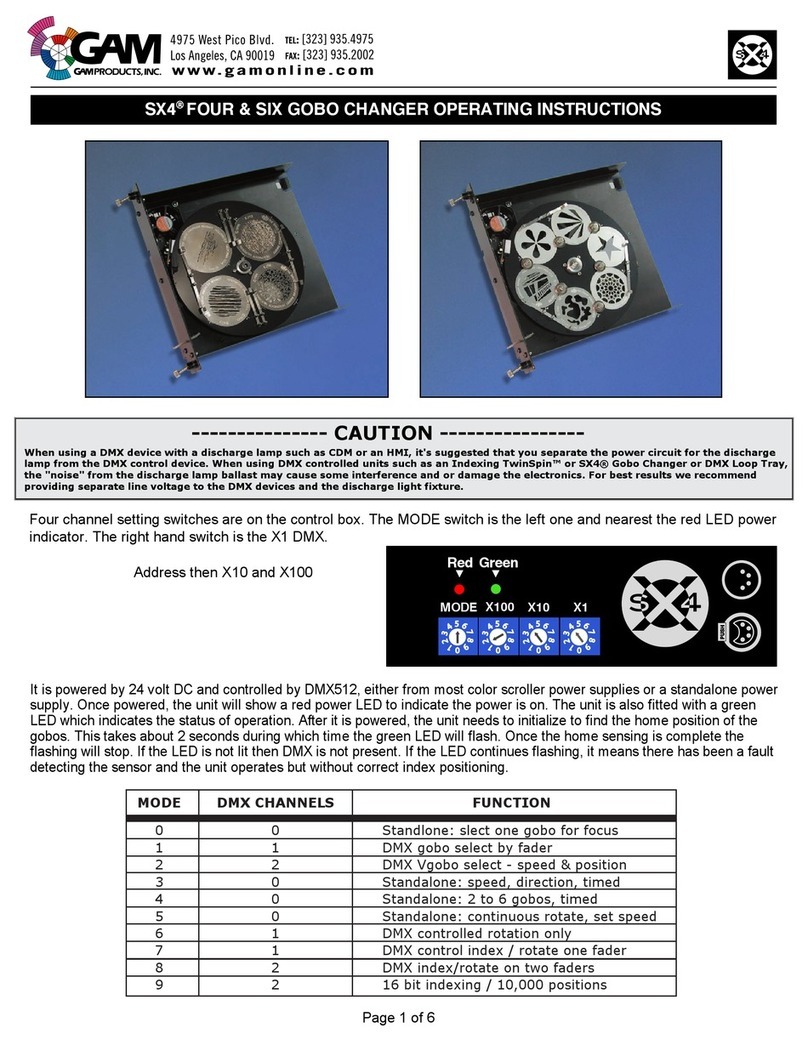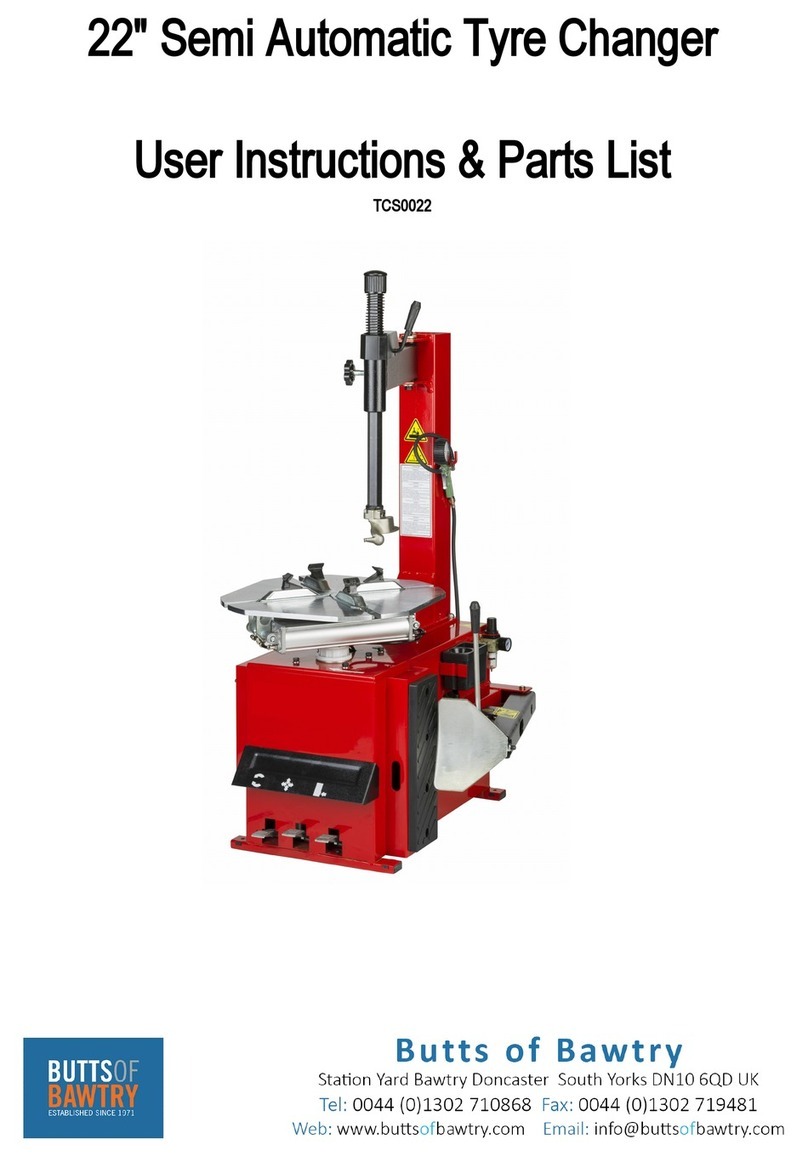
CAP.3 SICUREZZA
É estremamente importante leggere questo capitolo attenta-
mente ed in ogni sua parte poichè contiene importanti infor-
mazioni sui rischi che operatore e manutentore possono cor-
rere in caso di un uso errato dello smontagomme.
Nel testo che segue troverete chiare spiegazioni su alcune si-
tuazioni di rischio o pericolo che si possono verificare durante
l’uso e la manutenzione dello smontagomme, sui dispositivi di
sicurezza adottati e sul loro uso corretto, sui rischi residui e
sui comportamenti da tenere (precauzioni generali e specifi-
che per eliminarli o neutralizzarli).
IATTENZIONE:
Lo smontagomme è stato progettato e costruito
per essere utilizzato come attrezzatura per lo
smontaggio ed il rimontaggio dei pneumatici su
cerchi di ruote di autoveicoli, motocicli e motovei-
coli. Ogni altro uso non è consentito
Il costruttore non risponde di alcun danno a per-
sone, veicoli od oggetti causati dall’uso improprio
o non consentito dello smontagomme.
É estremamente importante che l’operatore agi-
sca soltanto dalla postazione di comando e ri-
spettando tutte le modalità elencate di seguito.
É vietato a chiunque sostare entro la zona di lavo-
ro indicata in fig.11 durante le fasi di lavoro dello
smontagomme.
NON UTILIZZARE LA MACCHINA SENZA LE PRO-
TEZIONI O CON LE PROTEZIONI DISATTIVATE.
IL MANCATO RISPETTO DI QUESTE NORME
PUO’ RECARE GRAVI DANNI ALLE PERSONE E
ALLO SMONTAGOMME.
PRECAUZIONI GENERALI
L’operatore ed il manutentore sono tenuti al rispetto delle prescri-
zioni contenute in leggi e norme antinfortunistiche vigenti nel pae-
se in cui è installato lo smontagomme.
Devono inoltre:
operare sempre dalle postazioni di lavoro previste ed indicate nel
manuale;
non rimuovere nè disattivare i carter e le protezioni meccaniche,
elettriche, o di altra natura;
prestare attenzione agli avvisi di sicurezza riportati nelle targhette
applicate sulla macchina e nel manuale.
Nel testo del manuale gli avvisi di sicurezza saranno evidenziati
nelle forme seguenti:
PERICOLO: Indica un pericolo imminente che può causare danno
alle persone (gravi lesioni o anche la morte).
ATTENZIONE: Indica situazioni e/o comportamenti rischiosi che
possono causare danni alle persone (lesioni più o meno gravi e/o
anche la morte).
CAUTELA: Indica situazioni e/o comportamenti rischiosi che pos-
sono causare danni di minore gravità alle persone e/o danni al
smontagomme, al veicolo o ad altre cose.
RISCHIO DI FOLGORAZIONE: è un particolare avviso di sicurez-
za che viene riportato sul smontagomme, tramite targhetta, in alcu-
ni punti dove è particolarmente elevato il rischio di forti scosse elet-
triche.
CHAPTER 3 SAFETY
It is vital to read this chapter of the manual carefully and from
beginning to end as it contains important information regar-
ding the risks that the operator or maintenance fitter may be
exposed to in case of improper use of the tyre changer.
The following text contains clear explanations regarding some
situations of risk or danger that may arise during the opera-
tion or maintenance of the tyre changer, the safety devices in-
stalled and the correct use of such systems, residual risks
and operative procedures to use (general and specific precau-
tions to eliminate potential hazards).
IWARNING:
Tyre changer is designed and built as a tool to
change tyres on car, motorcycles, or vans wheel
rims. All other uses are unauthorised.
The manufacturer disclaims all liability for injury
to persons or damage to vehicles and other pro-
perty caused by the incorrect and unauthorised
use of the tyre changer.
The operator must remain in the command place
in the respect of all the rules listed below.
The presence of persons inside the danger zone
marked in fig.11 is strictly prohibited during the
tyre changer working operations.
DO NOT USE THE TYRE CHANGER WITHOUT
PROTECTION DEVICES OR WITH THE PROTEC-
TION DEVICES INHIBITED.
FAILURE TO COMPLY WITH THESE REGULA-
TIONS CAN CAUSE SERIOUS INJURY TO PER-
SONS, AND IRREPARABLE DAMAGE TO THE
TYRE CHANGER AND THE VEHICLE BEING LIF-
TED.
GENERAL PRECAUTIONS
The operator and the maintenance fitter are required to observe
the prescriptions of accident prevention legislation in force in the
country of installation of the tyre changer.
Furthermore, the operator and maintenance fitter must:
Always work in the scheduled working area as shown in the ma-
nual.
never remove or deactivate the guards and mechanical, electrical,
or other types of safety devices;
read the safety notices affixed to the machine and the safety infor-
mation in this manual.
In the manual all safety notices are shown as follows:
DANGER: Indicates imminent danger that can result in serious in-
jury or death.
WARNING: Indicates situations and/or types of manoeuvres that
are unsafe and can cause injuries of various degrees or death.
CAUTION: Indicates situations and/or types of manoeuvres that
are unsafe and can cause minor injury to persons and/or damage
the tyre changer, the vehicle or other property.
RISK OF ELECTRIC SHOCK: specific safety notice affixed to the
tyre changer in areas where the risk of electric shock is particularly
high.
6

